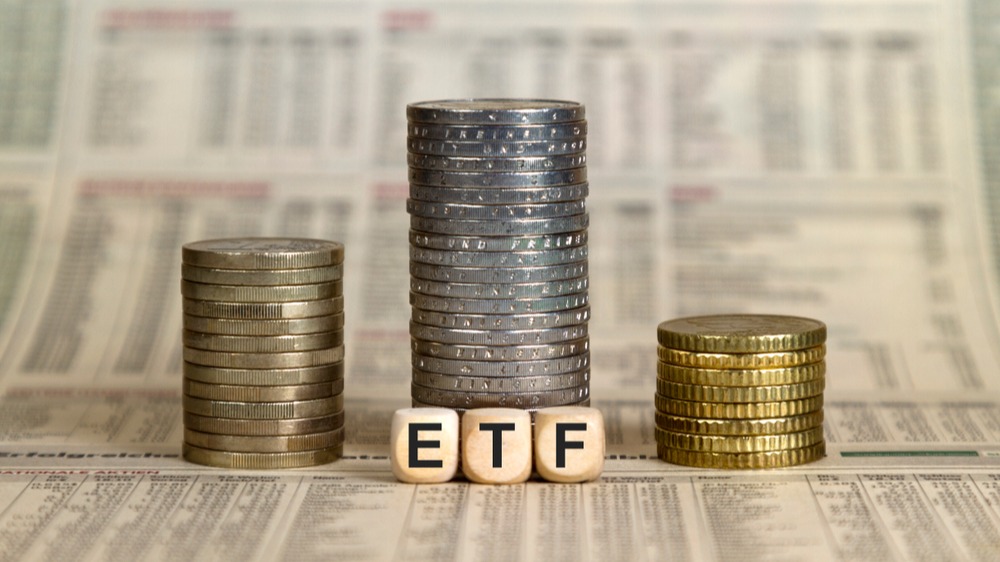Investors in Europe were drawn to core equity ETFs in 2021 funnelling flows into cheaper broad-based products with a few surprises along the way.
For the global ETF market 2021 was another record-breaking year as inflows surpassed $1trn for the first time with many industry insiders dubbing the past 12 months “the year of equities”.
While in Europe this was certainly the case, a quick look under the bonnet highlights several key trends that have come to shape a year dominated by inflation, ESG and the continuation of a low-yielding environment.
Core dominates…
Continuing the record-breaking theme of 2021 and topping the flows charts for the year is the mammoth iShares Core MSCI World UCITS ETF (IWDA).
The ETF recorded $10.2bn inflows last year, almost doubling the highest asset-gathering ETF of 2020, which saw $4.9bn invested into the iShares Physical Gold ETC (SGLN), according to data from ETFLogic.
In a sign of just how strong the flows into ETFs were over 2021, the next three ETFs topping the flow charts also beat SGLN’s 2020 showing.
The Lyxor MSCI World UCITS ETF (WLD) recorded $5.1bn of flows last year as investors selected a broad-based equity exposure as world economies continued to recover from the COVID-19 pandemic.
For example, the iShares Core S&P 500 UCITS ETF (CSPX) posted inflows of $3.8bn last year, closely followed by the Lyxor S&P 500 UCITS ETF (LYPS) which recorded $3.7bn. In fact, CSPX set a record for September inflows raking in $1.5bn over the month, according to data from Bloomberg Intelligence.
Other notable inflows include the Invesco S&P 500 UCITS ETF (SPXS) and the Vanguard S&P 500 UCITS ETF (VUSA) which captured $3.2bn and $2.5bn of inflows, respectively.
…but ESG makes ground
While core inflows remained strong, the evidence was also clear that investors were targeting as ESG tilts on their core exposures, with several US-focused ETFs with a socially responsible focus gaining momentum.
Second only to IWDA was the SPDR Bloomberg SASB U.S. Corporate ESG UCITS ETF (SPPU).
Having launched in October 2020 the ETF gathered $5.6bn over 2021. While $5.5bn of that can be attributed to an institutional investor, it highlights that demand for ESG has stretched to all corners over the market.
The $10.5bn iShares MSCI USA SRI UCITS ETF (SUAS) recorded $3bn inflows last year, while the $5.5bn Amundi Index MSCI USA UCITS ETF (USRI) banked $2.3bn as investors looked to get exposure to stocks with “outstanding” ESG ratings while excluding companies involved in tobacco, coal and weapons, among others.
Investors who opted for the sustainability route were also rewarded with performance, with SUAS returning 30.4% and USRI returning 44.4% in the 12 months to January, compared to 28% and 42.2% of LYPS and CSPX, respectively.
Elsewhere, the Xtrackers MSCI USA ESG UCITS ETF (XZMU) recorded inflows of $2.4bn in 2021.
The rest of the ESG inflows was dominated by BlackRock, however. The $5.3bn iShares MSCI USA ESG Enhanced UCITS ETF (EDMU) recorded $2.9bn inflows over the year, while the $5.1bn iShares MSCI USA ESG Screened UCITS ETF (SASU) posted inflows of $2.1bn.
In addition, the $6.9bn iShares MSCI World SRI UCITS ETF (SUSW) recorded inflows of $2.8bn.
China bond ETF soars
Propelling itself into the top five asset-gathering ETFs of 2021 is the iShares China CNY Bond UCITS ETF (CYBA) which recorded inflows of $5.1bn in the last year – the third largest take in 2021 – taking its total AUM to $12.2bn.
CYBA has been a beneficiary of strong flows into Chinese government bonds over the past year which hit record highs in each of the five months to August, according to data from the interbank bond market depository China Depository & Clearing Co (CDCC).
It came at an uncertain time for Chinese equities following a government crackdown on the country’s tech market in a bid to assert its control over the data collected by some of the world’s largest internet companies.
In addition, investors have been drawn to China as one of the few areas of the fixed income market where it has been possible to find yield.
As of 5 January, a 10-year China government bond has a yield of 2.8% compared to 1.6% for its US counterpart, while a five-year US Treasury note is yielding 1.4% versus 2.6% for a five-year China government bond.
Related articles:




